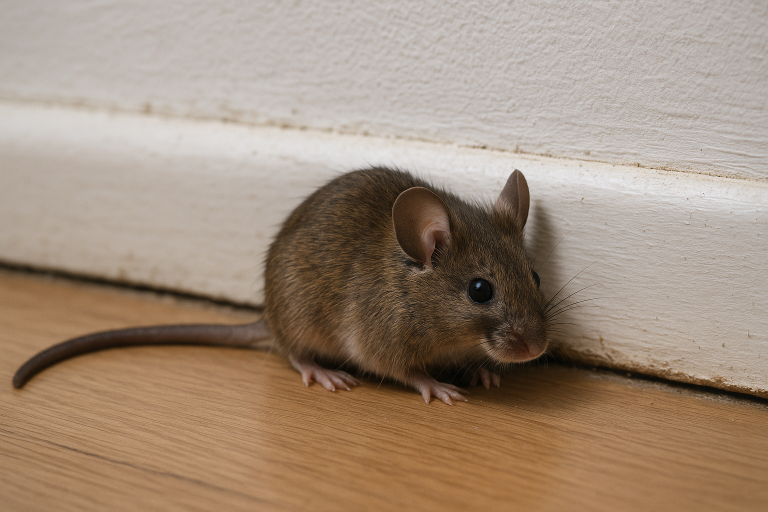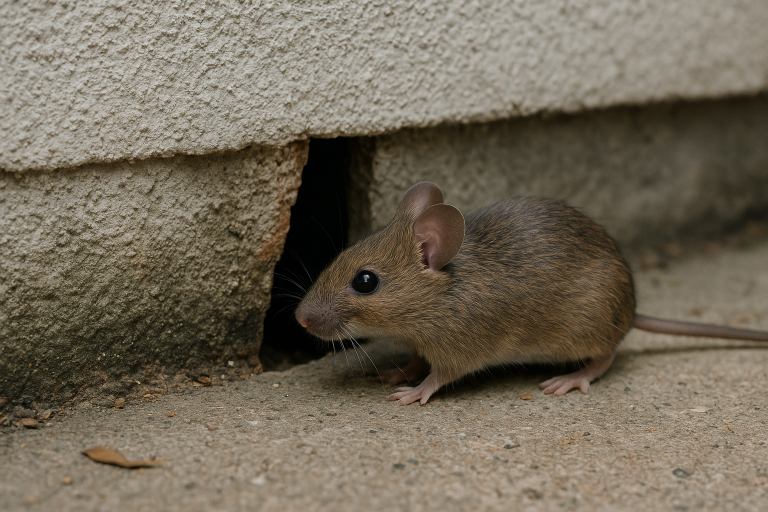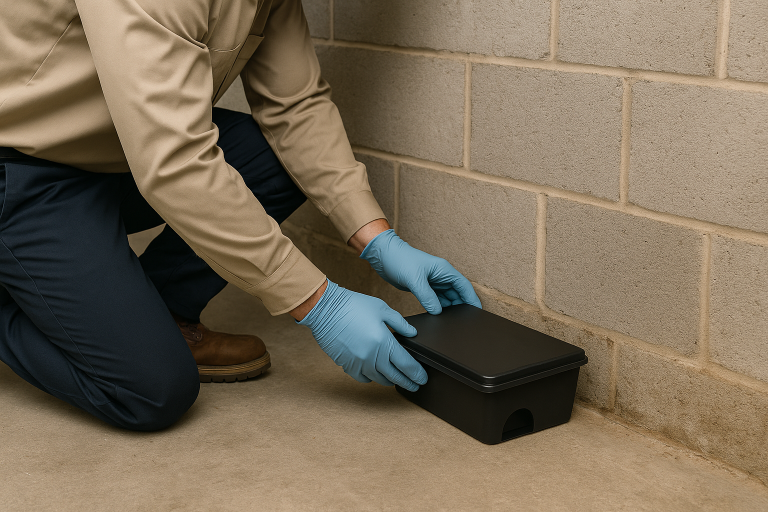Finding mice in your home is frustrating enough, but seeing them after you’ve already set traps can make the situation even more stressful. Many homeowners assume that putting down a few traps will immediately solve the problem, only to discover new droppings, fresh chew marks, or late-night scratching sounds days or even weeks later.
If this sounds familiar, you’re not alone. Mice are clever, adaptable, and fast-breeding pests. Once they’ve settled into your home, removing them takes more than a few traps. There are several reasons why mice continue to appear even after you’ve taken action, and understanding those reasons is the key to finally getting rid of them.
This guide explains 10 reasons why traps sometimes fail, what’s happening behind the scenes, and how to get ahead of a mouse problem for good.

1. There Are More Mice Than You Think
One of the most common misconceptions is that seeing a single mouse means you have a small problem. In reality, if you’ve seen one, there are usually several more hiding close by.
A typical house mouse can have:
- 6–8 litters per year
- 5–6 babies per litter
- A new litter every 30–40 days
If a breeding pair is inside your home, the population can climb quickly. Traps may catch one or two mice, but the remaining mice will continue to feed, explore, and reproduce.
Signs there may be more mice than expected:
- Droppings showing up in multiple rooms
- Noises in walls or ceilings at night
- Chew marks on food packaging
- Nesting material behind appliances or in storage areas
If activity continues despite trapping, you’re likely dealing with a larger infestation that requires a broader control strategy.
2. Traps Are Not Placed in the Right Locations
Trap placement is one of the biggest reasons DIY mouse control fails. Mice rarely wander through open spaces. They travel along walls, behind appliances, behind storage boxes, and through hidden paths you may not realize exist.
Common placement mistakes:
- Setting traps in the middle of a room
- Putting traps where mice don’t travel
- Leaving traps too close to food sources
- Placing traps where human scent is strong
- Not using enough traps for the size of the home
If your traps aren’t catching mice, it may be because they aren’t in the high-traffic areas mice use. Professionals often place traps in key areas like:
- Behind stoves
- Under fridges
- Along basement walls
- Behind laundry machines
- In furnace rooms
- Inside drop ceilings
- Behind kitchen kick plates
3. You Haven’t Sealed Their Entry Points
You can trap as many mice as you want, but if your home is still open to the outside, new mice will continue to enter. Mice squeeze through openings the size of a dime, and those openings often go unnoticed by homeowners.
Common entry points:
- Gaps around utility lines
- Openings under doors
- Cracks in foundations
- Unsealed dryer vents
- Damaged siding
- Holes where pipes enter the kitchen or bathroom
- Gaps between the garage and the home
If these entry points remain unsealed, fresh mice will keep coming in even while you’re catching others. This is why pest control companies will sometimes pair trapping with exclusion work. sealing the home so rodents can’t re-enter.
4. There Are Too Many Food Sources Available
Mice prefer easy meals. If your home offers crumbs, pet food, garbage access, or improperly stored pantry items, the mice may simply ignore your traps.
Food sources that compete with traps:
- Bird seed stored in garages
- Pet food left out in bowls
- Crumbs under appliances
- Open bags of rice, pasta, or snacks
- Compost bins
- Garbage not fully sealed
When food is plentiful, traps lose their appeal. Cutting off access to food is a critical part of mouse control.
5. You’re Using the Wrong Type of Trap
Not all traps work for all situations. Some traps are better for light infestations, while others are necessary for larger problems.
Common trap types:
- Snap traps are highly effective but require correct placement
- Glue boards are useful for monitoring activity but not ideal for heavy infestations
- Live traps catch mice humanely but often fail if not checked regularly
- Electronic traps are effective but costly
- Professional bait stations help to control large populations over time
Many homeowners use too few traps or traps not designed for the severity of their infestation. Professionals use tamper-resistant bait stations because they provide continuous control and don’t rely on perfect placement.

6. Mice Are Avoiding the Traps
Mice are naturally cautious in unfamiliar environments. While they are curious, they also have strong survival instincts and may avoid traps at first.
Reasons mice avoid traps:
- Human scent on the trap
- Placing the trap in open areas where mice feel exposed
- Unstable trap surfaces
- Using the wrong bait
A common mistake is using cheese as bait. In reality, mice prefer:
- Peanut butter
- Seeds
- Chocolate
- Nut-based spreads
Even with the right bait, it can take time for mice to trust new objects in their environment.
7. The Infestation Is Coming From Inside the Walls or Attic
You may be trapping mice in the kitchen or basement, but the main nesting site may be elsewhere.
Common nesting areas:
- Drop ceilings
- Attics
- Crawl spaces
- Behind insulation
- Inside walls
- Furnace rooms
If mice have established multiple nest sites, traps in one room won’t solve the entire problem. It takes a whole-home approach to identify all areas of activity.
8. You’ve Caught Some, but Not the Breeding Pair
If the breeding female is still inside the home, the population will continue to grow. Female mice reproduce frequently and aggressively. Removing juvenile or male mice won’t stop the cycle.
This is why monitoring ongoing activity is important. Seeing fresh droppings after catching mice often indicates that breeding adults are still active.
9. You’re Relying on Traps Alone
Traps help, but they don’t address:
- Entry points
- Food access
- Odour trails mice leave behind
- Structural vulnerabilities
- Hidden nests
- Activity inside walls or attics
Professional rodent control combines:
- Bait stations
- Traps
- Exclusion work (sealing entry points)
- Sanitation recommendations
- Follow-up monitoring
This integrated approach eliminates the current mice and prevents new ones from entering.
10. You Need a Professional Inspection
If you’re still seeing mice after setting traps, the issue is often bigger than it appears. A professional technician knows where to inspect, how mice behave, and what specific weaknesses your home may have.
During an inspection, a technician will:
- Identify entry points
- Map mouse travel paths
- Determine nesting sites
- Place commercial-grade bait stations
- Seal or recommend sealing problem areas
- Create a treatment plan personalized to your home
Professionals use stronger tools, experience, and knowledge that homeowners simply don’t have access to.

Take Back Control of Your Home
Seeing mice after setting traps doesn’t mean you failed. It means the infestation needs a more thorough approach. Mice are persistent, intelligent, and fast breeders, and once they’ve settled in, DIY methods often fall short.
If you’re still seeing mice, hearing noises, or finding droppings, it’s time to bring in experts who can identify the root of the problem and stop it for good.
Elite Pest and Wildlife Removal offers effective, long-term rodent control throughout Hamilton, Stoney Creek, Ancaster, Burlington, Oakville, and surrounding areas.
Call 226-208-7793 or visit elitepestandwildlife.ca to schedule your professional mouse inspection today.


